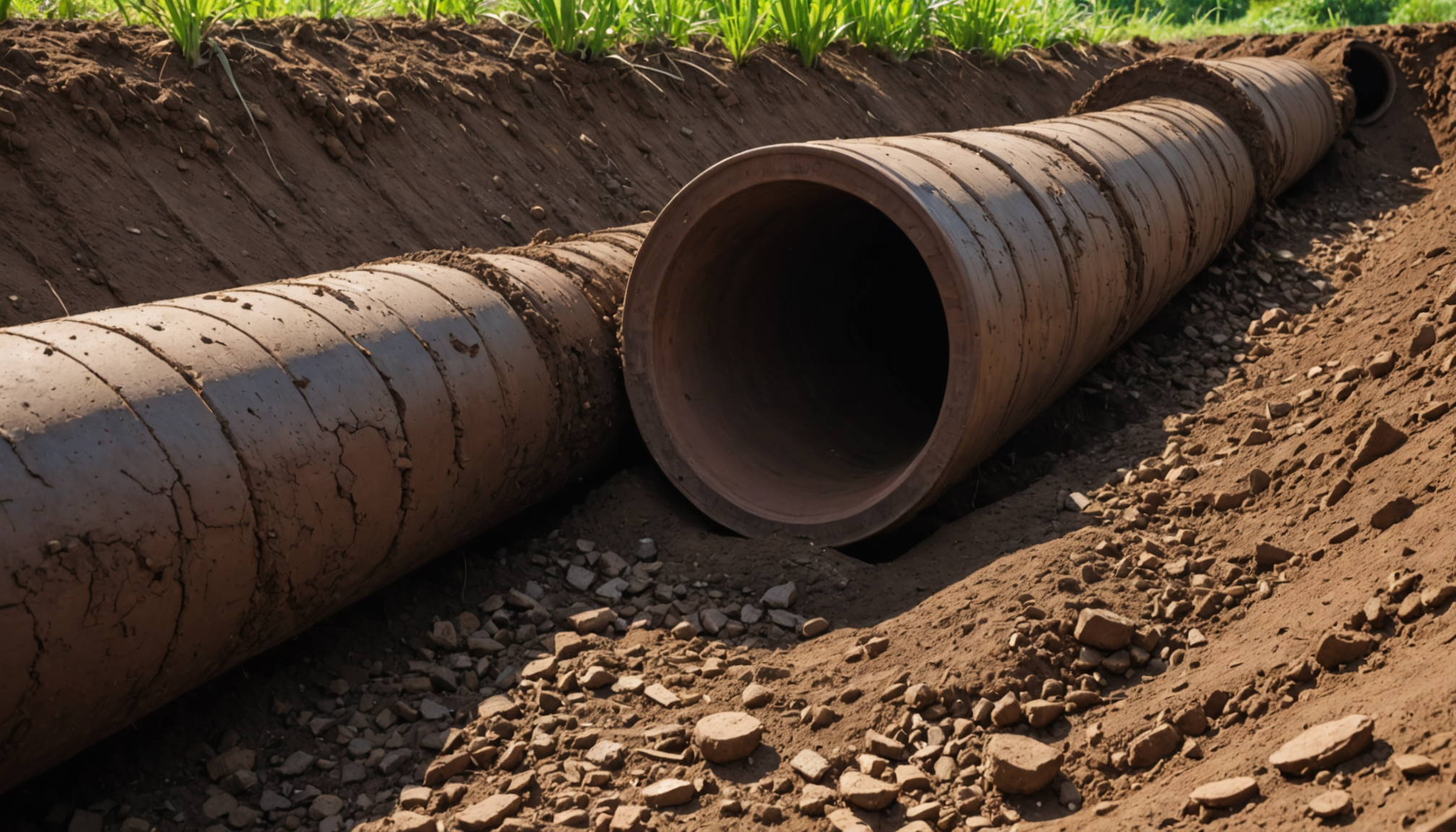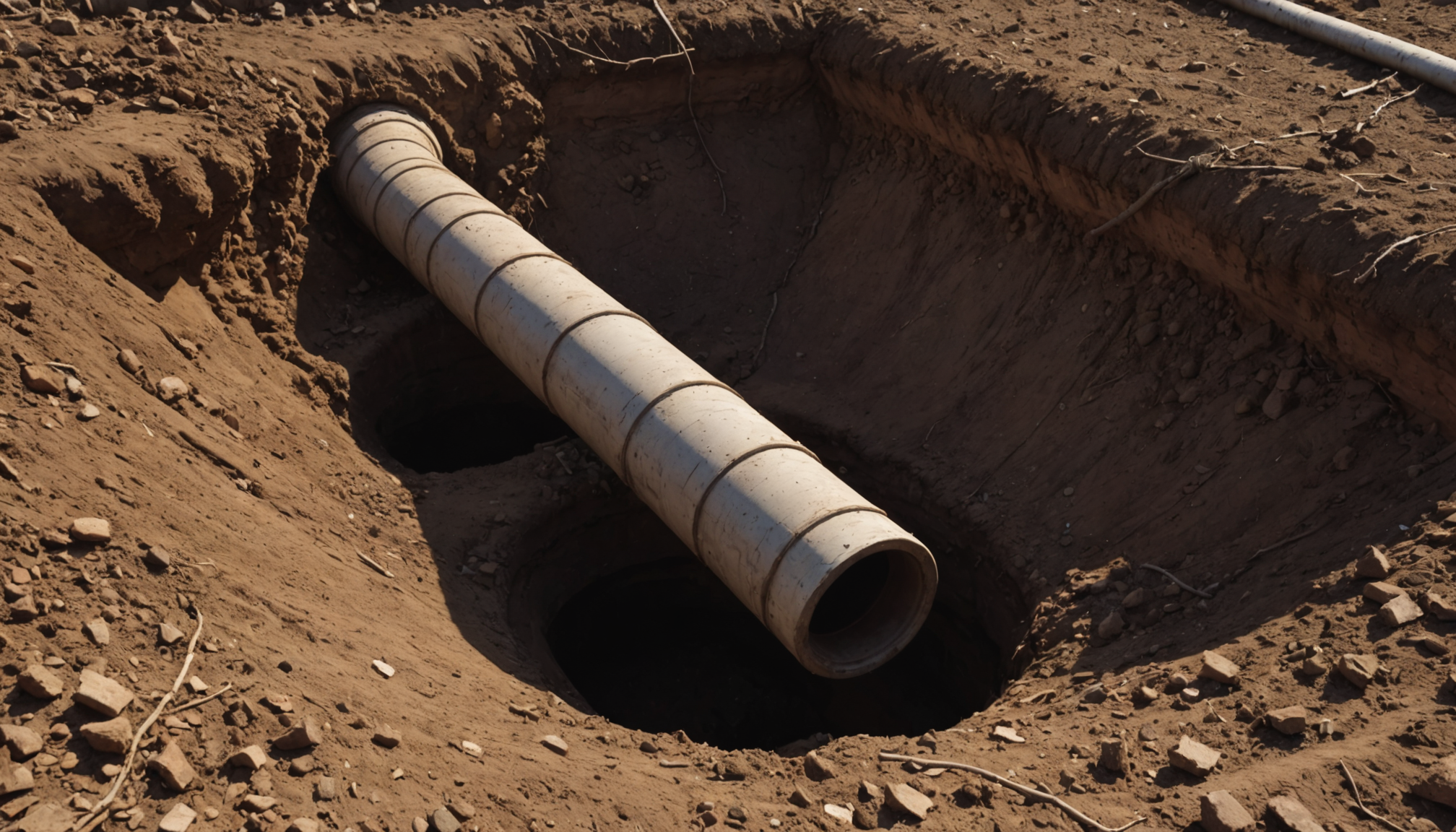Clay tile sewer laterals are an essential component of the plumbing infrastructure in many homes, particularly in older neighborhoods throughout St. Louis. These pipes, typically made from a natural and readily available material, have been used for centuries and were especially popular from the late 1800s until the mid-1900s. While clay tiles are valued for their natural durability and resistance to chemical degradation, they are not immune to wear and tear over long periods. Understanding the nature of clay tile sewer laterals is crucial for homeowners, as these pipes can significantly impact the efficacy of waste management systems and overall property health.
Clay sewer laterals are tasked with connecting a property’s internal plumbing system to the main sewer line. Structurally, they consist of multiple clay sections joined together, traditionally using a type of mortar that can become brittle with age. This mode of construction means that clay tiles are inherently susceptible to cracking and shifting over time, primarily due to soil movement or root intrusion. According to a study published by the Journal of Environmental Engineering, clay tile laterals can last up to 50 years under optimal conditions, though many begin to experience issues much earlier due to environmental factors specific to geographic regions like the Midwest.
These sewer laterals’ vulnerability is further exacerbated by the climate and soil conditions prevalent in areas like St. Louis, where clay-heavy soil can expand and contract significantly with moisture fluctuations. The city’s penchant for frequent freeze-thaw cycles adds additional stress to these aged pipes. As such, understanding the inherent properties and expected lifespan of clay tile sewer laterals is critical to making informed decisions about maintenance and necessary replacements. Proper management and timely updates not only ensure sustained operational efficiency but also prevent potential health hazards and property damage resulting from negligent sewer system upkeep. By recognizing the material’s strengths and weaknesses, homeowners are better prepared to take proactive steps in maintaining the integrity of their sewer systems.
Identifying common issues
Homeowners in St. Louis may encounter a range of issues with their clay tile sewer laterals, which can often lead to the need for replacement. One of the most common problems is root intrusion, where tree roots, seeking water and nutrients, penetrate the joints of the clay pipes. This occurs because the mortar that joins the sections of clay tiles can deteriorate over time, creating small gaps. These openings provide ample opportunity for roots to enter and grow inside the pipes, eventually obstructing the flow of wastewater and potentially causing significant damage if left unaddressed.
Another prevalent issue is the structural degradation of the tiles themselves. As the clay tiles age, they become increasingly brittle, rendering them susceptible to cracking under pressure. Soil pressure, vehicular traffic, or even minor ground shifts can apply such stress to these pipes. In particular, the expansive clay soils found in St. Louis, which swell and shrink depending on the season and moisture levels, intensify these vulnerabilities. This continual expansion and contraction can misalign the pipes, leading to a disrupted plumbing system and, in severe cases, sewer backups or leaks that pose environmental and health risks to residents.
Moreover, many clay tile sewer laterals suffer from sediment buildup and scaling on their interior surfaces over time. This accumulates gradually as minerals and debris from wastewater settle inside the pipes, reducing their diameter and flow capacity. Such blockages not only decrease the sewer lateral’s efficiency, but they can also complicate repair or replacement efforts later if they are not handled promptly.
Lastly, the frequent freeze-thaw cycles characteristic of the Midwest climate present their challenges. These temperature fluctuations can exacerbate existing cracks and create new ones, further weakening the pipeline’s infrastructure and accelerating the need for homeowners to evaluate replacement options.
Given the potential for these issues to develop into more severe problems, regular inspections and maintenance are essential. Periodically checking the condition of the sewer lateral using modern diagnostic tools like video camera inspections can help identify concerns early. Early detection significantly aids in planning for timely repairs or replacements, minimizing disruptions to home life and preventing costly damage.
- Tree roots often penetrate clay tile sewer laterals through deteriorating joints, causing blockages.
- Brittleness in aging clay tiles makes them prone to cracking under soil pressure and ground shifts.
- Regular monitoring is vital to catch sediment buildup and prevent significant flow reduction.
- The expanding and contracting clay soil in St. Louis puts additional strain on clay sewer laterals.
- Periodic video inspections can detect issues early, allowing for timely interventions and cost savings.
Replacement techniques and materials
When homeowners in St. Louis decide to replace their clay tile sewer laterals, choosing the right techniques and materials is crucial to ensure a durable and efficient plumbing solution. A common mistake many make is opting for a like-for-like swap without researching alternatives. While clay tiles might seem familiar, they are often not the most durable option available today. Instead, modern materials like PVC (polyvinyl chloride) and HDPE (high-density polyethylene) offer significant advantages. These materials are known for their lightweight nature, durability, and resistance to root intrusion, making them well-suited for the shifting soil conditions typical in St. Louis.
Another frequent error is neglecting to inspect the entire sewer lateral system before starting a replacement. Without a comprehensive assessment using methods such as video camera inspections, it’s possible to miss underlying issues or improperly address only part of the system. This oversight can lead to ongoing problems and possibly necessitate additional repairs or replacements down the road. To avoid this, homeowners should work with professionals who can conduct thorough inspections to inform a well-planned replacement strategy.
Many homeowners also mistakenly try to handle replacement tasks themselves to save costs, underestimating the complexity and regulations associated with sewer lateral replacements. Although DIY projects are appealing for budget reasons, improper installation can lead to further damage or non-compliance with local codes. In St. Louis, professional contractors are well-versed in the necessary permits and guidelines, ensuring that the job is done correctly and legally.
Additionally, skipping or underfunding the preparatory phase is another common misstep. Before any replacement begins, it is essential to conduct soil tests and consider trenchless technology options, which may minimize property disruption and lower overall costs. Techniques like pipe bursting or pipe lining, which do not require extensive digging, can be particularly advantageous for homeowners looking to preserve landscaping features.
Lastly, some homeowners fail to consider future maintenance needs during a replacement. Choosing materials and installation techniques that simplify future maintenance will help avoid costly repairs down the line. For example, selecting smooth, joint-free materials like HDPE can reduce the likelihood of sediment buildup, ensuring a free-flowing sewer system for years to come.
By understanding and avoiding these common mistakes, homeowners can ensure a successful and cost-effective sewer lateral replacement that will better withstand St. Louis’s environmental challenges and serve their property for decades.
Cost considerations for homeowners
Considering the financial aspects of replacing clay tile sewer laterals in St. Louis is crucial for homeowners aiming to balance their budgets while ensuring a reliable plumbing system. The costs involved in such replacements can vary greatly depending on several factors, including the length of the lateral, the type of material chosen, and the complexity of the installation process. Typically, the total expense can range from a few thousand to tens of thousands of dollars, necessitating careful planning and budgeting.
One of the primary cost drivers is the choice of material. While traditional clay tiles might offer a nostalgic appeal, opting for modern materials like PVC or HDPE can be more cost-effective in the long term due to their increased durability and lower maintenance requirements. Although these alternatives might have a higher upfront cost, they can significantly reduce the likelihood of future repairs or replacements, offering a worthwhile investment for homeowners.
Another critical factor is the method of replacement chosen. Trenchless technologies such as pipe bursting or pipe lining, though sometimes perceived as more expensive than traditional excavation methods, can actually reduce overall costs by minimizing property disruption and associated restoration expenses. Additionally, these technologies often shorten the time required for the project, translating into lower labor costs.
Homeowners must also consider the potential need for permits and inspections, which are mandatory in St. Louis for any significant plumbing work. These add-on costs can swiftly accumulate but are essential to ensure compliance with local regulations and avoid potential fines or rework. It is advisable to account for these expenses early in the planning stage to prevent unexpected financial surprises.
Furthermore, while hiring professional services might seem costly initially, qualified contractors bring invaluable expertise and familiarity with local codes, potentially saving money in the long run by ensuring the job is completed correctly the first time. Professional contractors can also assist homeowners in navigating available financial aid or city programs that offer subsidies or low-interest loans for sewer lateral replacements.
For St. Louis homeowners overwhelmed by these considerations, starting with a detailed assessment of the existing sewer lateral condition is wise. Consulting with trusted professionals to obtain multiple quotes and comparing material options is also recommended. Prioritizing future savings over initial cost can guide decisions that yield a more reliable and cost-effective solution.
Ultimately, managing the costs of replacing clay tile sewer laterals is attainable with thorough research and strategic planning. Embrace this opportunity to improve your home’s plumbing infrastructure, ensuring peace of mind and resilience against future issues. With the right approach, you can invest wisely in a solution that enhances your property’s value and functionality, paving the way for a worry-free living environment in the heart of St. Louis.
Hiring professional services in St. Louis
- Why should I consider hiring a professional service for replacing my clay tile sewer lateral?
- Hiring professional services ensures that the replacement is performed in compliance with local St. Louis regulations, minimizing the risk of future issues. Professionals also bring expertise and access to the latest technologies, such as trenchless methods, which can offer a more efficient and less disruptive replacement process.
- How do I choose a reliable contractor for sewer lateral replacement in St. Louis?
- It’s crucial to research and compare multiple contractors, checking their licenses, reviews, and past project references. Choosing a contractor familiar with St. Louis’s specific environmental and regulatory challenges can also provide an added layer of assurance in achieving a successful project outcomes.
- What are trenchless technologies, and how do they benefit sewer lateral replacement?
- Trenchless technologies, such as pipe bursting and pipe lining, allow for the replacement of old pipes without the need for extensive excavation. These methods are typically faster, less disruptive, and can often be more cost-effective than traditional methods, as they reduce landscaping restoration expenses and project time.
- Are there any financial aid programs available for sewer lateral replacement in St. Louis?
- Yes, several financial aid options may be available, including local government subsidies and low-interest loans specifically designed for homeowners undertaking plumbing infrastructure improvements. Contractors and local municipal offices can often provide information on these resources and guidance on how to apply.
- What should I expect during the sewer lateral replacement process?
- The process typically begins with an assessment using video inspection to identify the extent of the issues. Following this, a plan is executed to replace the old sewer lateral, using either traditional or trenchless methods, based on the specific needs identified. Throughout, you can expect regular communication from your contractor to keep you informed of progress and any unforeseen developments.

